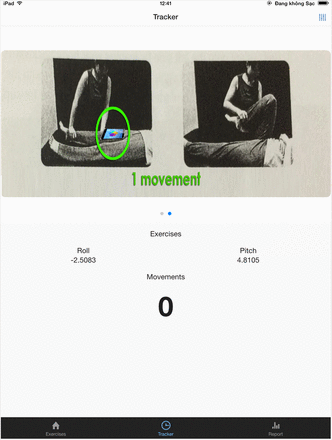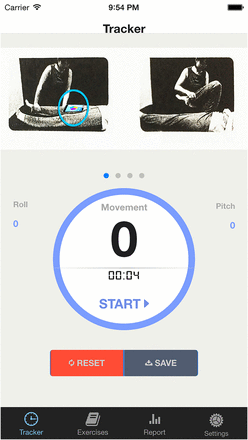Article Text
Statistics from Altmetric.com
Commentary
When the WHO first undertook a worldwide programme looking into the mortality associated with 135 diseases in 1990, cerebrovascular disease or stroke was ranked as the second leading cause of mortality.1 Further studies carried out by the WHO in 20012 estimated that stroke accounts for nearly 9.6% of all mortality and that it is indeed a major disease leading to disability and a corresponding reduction in the quality-of-life globally.2 More recently, statistics released by the Centers of Disease Control and Prevention (CDC) in the USA have highlighted that in that country, stroke accounts for approximately 1 in every 20 deaths.3 Given these alarming statistics, there has been much public health effort to reduce the incidence of the disease. Along with advances in technology and the growing number of web resources, innovations have increasingly been utilised to provide medical professionals, allied health professionals as well as the general public with more information about cerebrovascular diseases, and efforts are being made to help better manage the condition.
Divyanshu et al4 recently undertook a review of the various stroke-related resources in the application stores. They identified various tools currently available in the application stores, which included applications that provide general information; applications that provide information about recent research and advances; various toolkits that could either be used by patients or by healthcare professionals; as well as other awareness and support group applications.4 The variety of current cerebrovascular-related applications available appeared to be holistic enough and could potentially augment various public health initiatives launched by local governments. Of note, their analysis showed that there was a significant difference in scientific validity, with most of the applications targeted for the general population being not scientifically validated.4 In addition, an alarming 87% of these applications not supported by evidence have been rated to be useful by the general public. These concerns about the quality of information provided to the public and the robustness of the scientific merit of these smartphone applications are not limited to stroke and have been raised by Zhang et al5 in their review of educational-related applications for Psychiatry. In addition, Zhang et al5 also made recommendations for clinicians and educators to be more involved and previously shared two methodologies regarding how medical doctors could participate in application development.6 ,7
Sureshkumar et al8 recently described how their ‘Care for Stroke’ application could potentially help stroke survivors suffering from physical difficulties. In their paper, they described their methodology for formulating and developing their application. Their efforts regarding conceptualisation and implementation of such a smartphone application for rehabilitation show that clinicians do have the capacity to design evidence-based tools for their patient cohort. However, it seems that the authors approached the problem of stroke from merely a rehabilitation point of view. In Singapore, the incidence of cerebrovascular disease is rising, with patients suffering significant morbidity after stroke.9 Stroke Support Station (S3) is a voluntary charity organisation recently set up in Singapore to meet the needs of stroke survivors in terms of rehabilitation and beyond. S3 aims to provide activities to help not only stroke survivors, but also their caregivers. A previous literature review highlighted the tremendous burden of stress that caregivers of stroke survivors face,10 and stressed that there is a current lack of evidence-based programmes aimed at reducing the stresses associated with caring for stroke survivors.
The authors have conceptualised the development of three applications, namely the S3 stroke survivor application, the S3 caregiver application as well as the S3 rehabilitation application. It is hoped that these smartphone applications, which are built on an evidence base, would help not only in the rehabilitation of stroke survivors, but also to reduce the burden for caregivers of stroke survivors. The S3 stroke survivor application features the innovative visual pill tracker,11 which the authors previously developed and implemented for patients with mood disorders. In addition, the application also enables stroke survivors to track their international normalised ratio, which is a critical value that patients need to monitor, especially if they are on anticoagulants such as warfarin. The application also provides evidence-based information about the common medications prescribed poststroke and diabetic monitoring, and recommendations on management of blood pressure and lipids.12 Psychiatric comorbidities such as depressive disorders13 are common for post-stroke survivors and, hence, a visual mood tracker has been included, in order to enable stroke survivors to track their daily mood. The design of the mood tracker emulates that of a visual analogue scale, which renders it easy for stroke survivors to use. Lastly, stroke survivors are also able to make use of validated questionnaires, such as the Hospital Anxiety and Depression Scale (HADS) questionnaire, to monitor their levels of depression and anxiety in-between consultations (figures 1⇓⇓–4; see online supplementary video 1). In addition, the current application is available in different languages to cater to non-English speaking individuals.
Overview of the functionality of the Stroke Support Station (S3) stroke survivor application.
Demonstration of how patients could keep a record of their international normalised ratio counts.
Demonstration of the pill reminder system integrated into the applications. All guidelines and recommendations in the application are based on evidence-based protocols.
Hospital Anxiety and Depression Scale Questionnaire that stroke survivors could take to gauge their levels of depressive and anxiety symptoms.
Given the high incidence of care-giving stress, the S3 care-giver application aims to provide evidence-based information to care-givers to help them manage their loved ones/stroke survivors. The information ranges from basic principles of care-giving to exercises care-givers can help loved ones perform, and how to manage issues such as feeding and incontinence. Mindfulness-based exercises are an integral component of the application as well, as these could potentially help to reduce caregiver burden and stress. Questionnaires such as the care-giver stress index have been included as well to track care-giver burden and to advise care-givers to seek help if their scores are high (figures 5⇓⇓–8).
Overview of the caregiver application.
Overview of the functionality of the Stroke Support Station (S3) caregiver application.
An example from the Caregiver Burden Questionnaire.
Automated computations of score and appropriate advice will be given so caregivers can seek help when required.
Apart from designing applications to help with the medical and psychiatric well-being of stroke survivors as well as their care-givers, it is also essential to provide applications to help stroke survivors in their rehabilitation programme. A recent publication by Sureshkumar et al,8 has included pictures as well as videos of exercises that patients with stroke can perform. It is also of importance for the physiotherapist involved in the care of the stroke victim to keep track of his or her progress. Hence, the S3 Rehabilitation application has been conceptualised and developed for the IOS as well as Android platforms. In this application, stroke survivors can view what type of exercises or activities they can participate in. Caregivers can help stroke survivors to wear their smartphones while exercising to log their rehabilitation progress (figures 9 and 10; see online supplementary video 2). The smartphone application has been designed to keep track of the absolute number of movements, as well as the acceleration of the movement made. It is hoped that this will help the physiotherapist to have a more objective record of how the patient has been progressing outside of the time allocated for clinical assessment and management.
Demonstration of the Stroke Support Station (S3) rehabilitation application with active movement tracker.
Example of Log Records of exercises that the patient has taken part in.
It is thus hoped that the appropriate use of technology would help in the recovery process for stroke survivors. In addition, it is hoped that technology would also enable caregivers to have better knowledge about how best to help their loved ones, while keeping track of their own mental well-being, given that caregiving is an inherently stressful job.
Acknowledgments
Ms Chew Poh Yim from S3 (Stroke Support Station, Singapore) contributed to the conceptualisation of the smartphone applications described in this manuscript. She is the founder of the S3 (Stroke Support Station), Singapore. The S3 Wellness program she has initiated promotes improvement in cognition, physical abilities and psychosocial aspects of Stroke patients, which in turns leads to their reintegration in the community in terms of their mastery of their life skills and community mobility.
Supplementary materials
Supplementary Data
This web only file has been produced by the BMJ Publishing Group from an electronic file supplied by the author(s) and has not been edited for content.
- Data supplement 1 - Online video 1
- Data supplement 2 - Online video 2
Footnotes
Twitter Follow Melvyn Zhang at @melvynzhang
Competing interests None declared.
Provenance and peer review Not commissioned; internally peer reviewed.
Data sharing statement No additional data are available.












